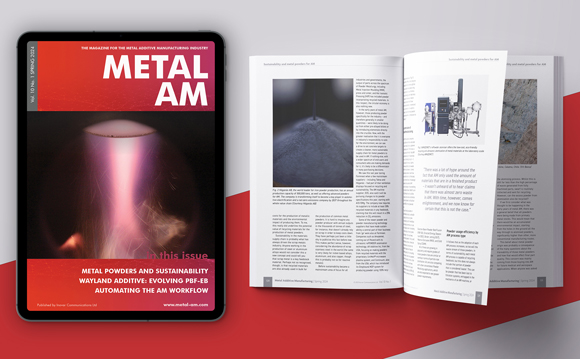Concurrent Technologies Corporation invests $1.2 million in metal Additive Manufacturing equipment
June 5, 2017
Concurrent Technologies Corporation (CTC) has announced the investment of a further $1.2 million in Additive Manufacturing equipment at its facility in Johnstown, Pennsylvania, USA. Following a previous $800,000 investment in AM equipment, this brings the company’s total investment to some $2 million.
According to the company, the new equipment includes a VRC Metal Systems Gen III Max Cold Spray system and an AMBIT™ Hybrid Additive Manufacturing multi-task system (installed in a HAAS VF 11 multi-axis machine tool). With these additions, CTC will offer clients three metal processes: cold spray, hybrid Additive Manufacturing, and powder bed fusion-laser. These processes can also be merged to provide customised solutions.
“We are applying our 30-year history in metals and metal processing to be an all-encompassing service provider for Additive Manufacturing solutions,” stated Edward J Sheehan, Jr, CTC’s President and Chief Executive Officer. “Additive Manufacturing, also known as 3D printing, is growing exponentially in the US, and we have the in-house expertise to continue to deliver outstanding metal-based solutions in this emerging arena.
One of the company’s new machines is the VRC Metal Systems Gen III Max, for cold spray technology. “The Gen III Max consumes a small three-foot by five-foot area and is on wheels, enabling versatility and easy mobility for production, repair, or in-the-field applications,” explained Ken Sabo, Senior Director, Additive Manufacturing and Materials at CTC. “It can be manually or robotically operated, making it the system of choice for many repair and obsolescence applications.”
Cold spray is a solid-state process that deposits metal powder with temperatures below the material melting point through the use of a supersonic nozzle and pressurised/heated inert gas. “CTC can use cold spray to repair expensive and hard-to-acquire components on structures such as military aircraft, vehicles and even submarines that would otherwise be scrapped,” Sabo continued. “Similarly, ageing military parts that are worn or damaged can be repaired or replaced in an affordable, effective manner using Additive Manufacturing. CTC designed many parts for the U.S. military over the past three decades, so we are well positioned to assist our military clients with new and used parts.”
Another of the company’s new machines is the AMBIT multi-task system, developed by Hybrid Manufacturing Technologies. Using hybrid AM, CTC will be capable of repairing damaged or worn parts and surfaces, Sabo explained. “CTC engineers will use the hybrid machine to employ a cladding process and build new geometry before switching to a milling operation to finish the part. While hybrid repair is a significant benefit to manufacturers, adding geometry or features to an existing part can also yield significant cost savings when applied correctly.”
At CTC, the AMBIT system is paired with a HAAS VF-11 5-axis milling machine. The working envelope is approximately 305cm x 102cm x 76cm (120 in x 40 in x 30 in) for large part repair or feature addition.
















